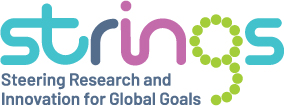Based on work by STRINGS partner CWTS, we have developed a tool to explore the extent to which research communities (i.e. different areas of research) relate, or not, to SDGs.
Since May, we have worked hard to define the set of search terms we use to identify academic papers that relate to the SDGs. Differently from most exercises like this (such as SIRIS, Dimensions, Elsevier, Aurora Universities, and Bergen), we assess the allocation of publications across research communities that, as a whole, may be working on SDG related topics. This approach acknowledges that what may be contributing to the SDGs is a combination of research outputs, rather than a single paper.
Focussing on research communities allows us to compare our list of terms with those previously published, such as SIRIS. While this has enabled us to improve our list, it is important to acknowledge that whatever machine driven method is used, the identification of research related to the SDGs depends on subjective views about what is relevant to address the SDGs.
We are currently exploring the main communities, countries, organisations, disciplines and topics that relate to the SDGs, as well as the synergies between SDGs and the relationship between investment in science, technology and innovation (STI) and progress on SDG targets. We are also creating a taxonomy to categorise STI and research communities in relation to the SDGs and exploring future trajectories of emerging STI.
Beyond this analysis, we aim to open up a tool which will enable users to contribute their own understanding of which research communities are more likely to be related to SDGs.

Leave A Comment